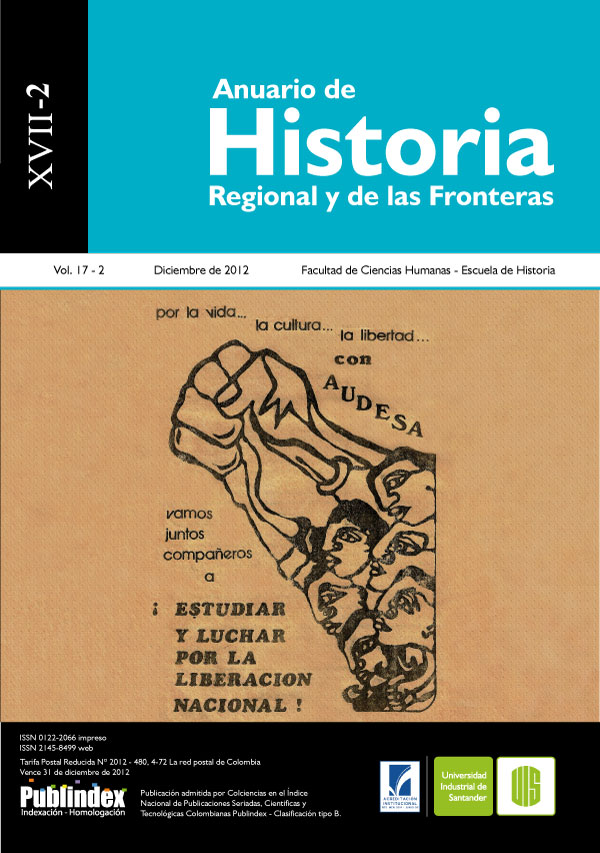Archaeology in northeastern Colombia: Preguane and Guane settlement in the site of Los Teres
Published 2012-11-28
How to Cite
Abstract
This article examines the settlement patterns of Preguane and Guane prehispaniccultures in Eastern Colombia. From the results of the archaeological project entitled“Study of the archaeological, geological, environmental and landscape heritage inla Mesa de los Santos: bases for eco-development projects”, we provide an initialapproach to explain the differences and similarities of the socio-historical and culturaldevelopment in the 11th century in present-day middle eastern Santander, Colombia(South-America).Taking into account the data obtained from the archaeological site of Los Teres, weopen a discussion about the existence of two prehispanic communities that inhabited thesame territory in different periods of time and were independent in their origins, theirhistorical development and their socio-cultural evolution. Preguane is a prehispanicculture which socio-cultural activity was present until the 11th century in la Mesa de losSantos, and Guane group is a later social phenomenon which origin is still unknown, butwhich presence was evident in Northeastern Colombia in the 12th century.The differences and similarities in the material culture items are a key to formulatethis initial diachronic approach to the socio-cultural sphere of prehispanic easternColombia, highlighting the consolidation of processes and realities that are linkedwith the Republic of Venezuela. This approach is supported in the stratigraphic andcultural context, the spatial distribution (vertical and horizontal) of the pottery and lithic artefacts, and their associations with other archaeological evidence such asdomestic space, workshops and ovens, all of them gathered in a model of analysis ofthe regional and local patterns of settlement.
Keywords: Santander’s prehispanic cultures, Preguane culture, Guane culture, Mesade Los Santos, Guane pottery.1. Presentación general
